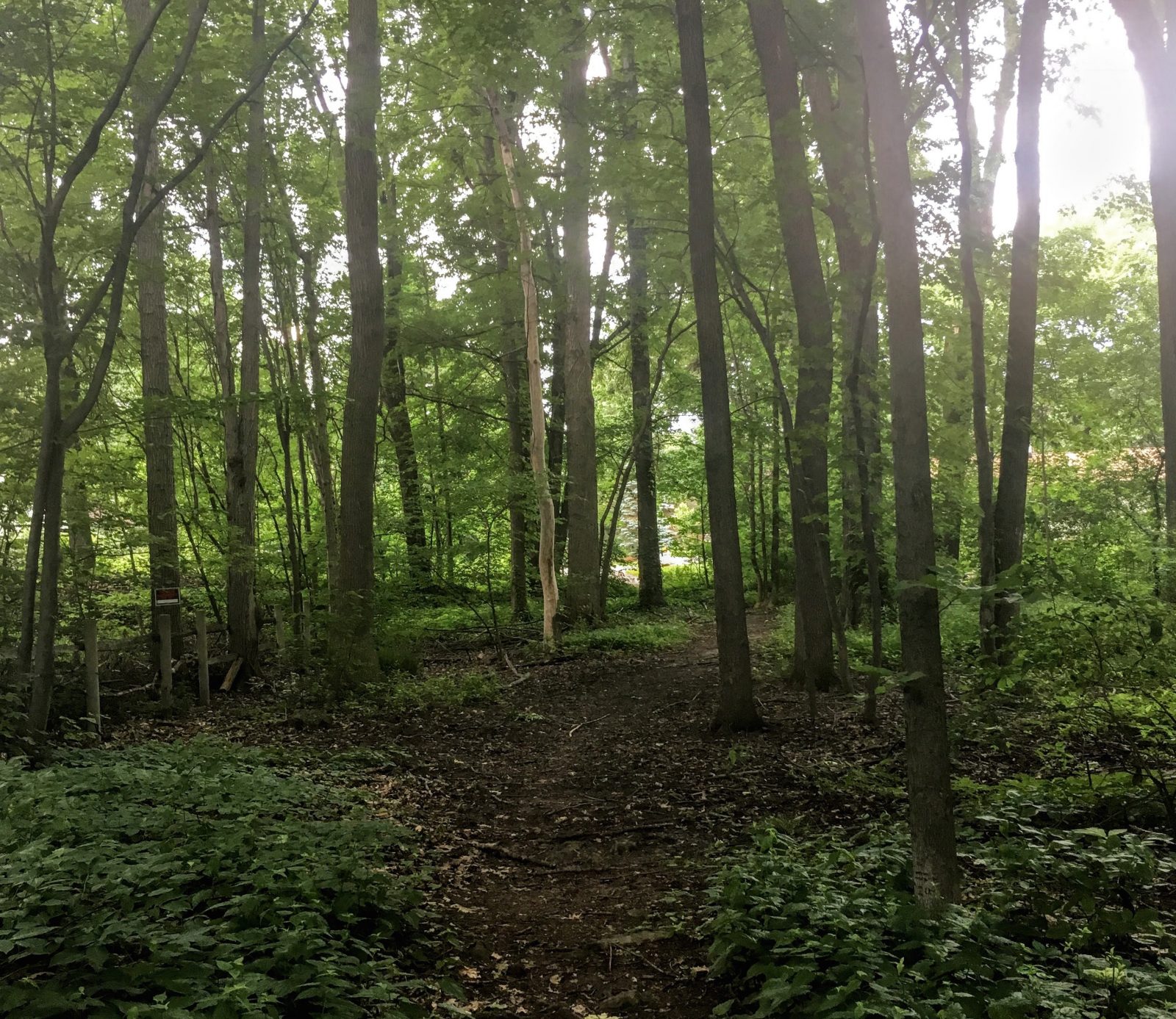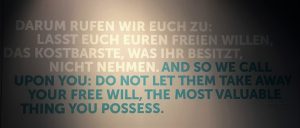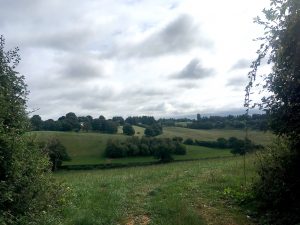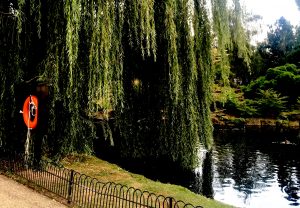August 20, 2017
All summer, while I slept in my adolescent bedroom and sorted through everything I left behind when I went to college and when I moved to New York, I was thinking about memory. Memory, and nostalgia, and belonging, and though the whole summer through I meant to sit and write something about it I never quite found enough time alone to find my words. I’ve been in DC for over a week and I’ve unpacked my books, hung my art, met with my supervisor, and interrupted work and nesting to visit with friends. But today I struck out on my own and I’ve found a minute to think, here in the shade by the fountain in the National Gallery of Art Sculpture Garden.
Before I left New York I devoured a book by Rebecca Solnit called A Field Guide to Getting Lost*, and I’ve talked about it to anyone who would listen ever since. It meanders through the topics of loss and lost, drawing connections between the two that are surprising but resonant. In one anecdote I loved, she talks about childhood memories and how they grow less distinct over time. How when she has written a memory it stops being real or alive and becomes “fixed in letters”. Solnit writes of seeing a snapshot of herself as a toddler wearing a shirt she remembers having on, and then losing the sensation of what it was like to wear it now that she sees this “unrecognizable toddler” who lived that memory.
I write this because I need to step carefully. I don’t want to lose the shivery sense of walking back in time I felt this summer when I made my way from the street where I was a teenager, where my family still lives, down a short path through the woods to the street where I was a child, where one of my best friends now lives with her family. It was one of the joys of my summer to turn the corner and step into the brief quiet of that path.
Maybe some of the time travel came from two months of being such a short walk from my friend. It brought us back to childhood when we lived close together and saw each other often. On those walks I sometimes paused to wonder if my love of cool green trees and the hiking paths of the U.K. came from these woods and our tree-lined childhood street. And yet I didn’t make that walk all that often growing up — a rare illicit bike ride with friends before I moved, and afterward, a quick cut through with my brother or alone on the way to the mall on foot. When we were children it was the scrub of woods behind our houses that drew us for short adventures and fort building.
While going through my things I found journals I’d forgotten about. I started keeping a daily journal at sixteen, and I’d remembered one pink ballerina diary from elementary school and one maroon composition book from middle school, but I found other journals that filled the gaps. Rather than overwriting and codifying memories, they brought back events I’d forgotten, concerns I didn’t know I’d had — and a few I had been okay with forgetting. Some are written in pencil and I know I need to preserve them — in part because my fifteen-year-old self wanted me to save one of them for my future biographer. Dream big, baby Sarah.
I also found a lot of poetry. Because I haven’t written poetry since college, I hadn’t thought about all the poems I had written in the years before it. Some were so terrible I threw them out, but many sharpened my image of who I used to be just a little more.
And some were good enough to plagiarize myself. For a freshman English class I wrote a Wordsworthian sonnet about my summer program at Carleton College and the time I’d spent on a little island there, the one with a labyrinth. I’d ended with a few lines about looking back at that time and remembering that place and “those peaceful days of quiet strength of heart.” I’ll have to use that line again somewhere because it exactly captures one of my favorite elusive feelings, the one I get when I stand by the edge of the water and listen to the waves, or feel the wind from a height, or get caught up in a rushing swell of music. “Quiet strength of heart.” Yes.
Elsewhere in her book Rebecca Solnit writes of relationships as being like houses we build together that disappear when they end:
You adjust to a big view in this direction and no view in that, the doorway that you have to duck through and the window that is jammed, how who you think you are becomes a factor of who you think he is and who he thinks you are…. It’s a shock to find yourself outdoors and alone again, hard to believe that you could live in another house, big where this one was small, hard when your body has learned all the twists and turns of the staircase so that you could walk it in your sleep, hard when you have built it from scratch and called it home, hard to imagine building again. But you lit the fire that burned it down yourself.
It’s such a perfect metaphor not only for all kinds of relationships but also for the lives we build for ourselves. Little changes are hard — fix the broken step and you might still step over it like it’s gone — but when we burn it all down it’s hard to figure out what rebuilding looks like. I’m working on that now.
September 29, 2017
I have been in DC for over a month and the peaceful days have been few and far between — I’ve heard that the problem with grad school is that there is literally always something you could (should) be doing and that’s exactly true as I sit here writing curled up in my chair when I could be reading for next week’s classes.
I’m thinking still about Rebecca Solnit and burning down that house of who we were, because in some ways I’ve slipped easily into this brand-new life, surrounded by my books and wrapped in a blanket my great-aunt knit for me before I left for college. I am tired and a little overwhelmed but I’m here, present, engaged in the life I’m shaping.
It may be that I carry my house like a turtle, objects held close but also friends and family drawn near over the phone and in messages. Someone said to me recently that our interconnectedness with faraway friends might hamper us creating new relationships. I see the point — but I don’t think any of my classmates would accuse me of not being open to new friends. We can’t be best friends with everyone we meet but I think we can connect and learn from each conversation we have, even the bad ones.
This ease in times of transition is something I talk about because it’s been with me through every change I’ve made. My mom jokes that I hit the ground running when I started college (and didn’t call home enough because of it). Wherever I am is where I’m meant to be, until it’s not, and so my nostalgia is rarely strong enough to make me wish the past here again. It does, however, send me looking back like a detective, trying to understand who I was then, as if the memories I’ve lost over the years define me.
October 15, 2017
I am on a plane, returning home from a dear friend’s wedding, and time is stretching and connecting. Eleven months ago I sat in the sunshine and looked at a labyrinth and thought, I could live in DC. The day before I’d been with my friend as she and her fiancé purchased her engagement ring, and now I live a few miles from them and they are married.
A recent conversation had me paging through a journal from my junior year of college, where I found a rare entry that was more than this is what I did and who I saw and how tired I am. I was talking about a story I had written and was sharing with some friends.
“I’m pretty proud of it,” I wrote, “just the idea and complexity, but also the language. I think this is what I’m called to do, that I do have something to say, even if I don’t know what it is at first. I think this time it was about healing and new beginnings — important stuff. I don’t know how overtly spiritual or religious I could be in my writing, but I think my hope in humankind (and human kindness) is usually present. At least I want it to be. But I don’t want to be didactic, or sentimental. Tough balance.”
There’s a line to be drawn between who we are and who we were, and the people who knew us then and know us now. There are things I want to remember about who I wanted to be and who I can be. Time folded back on itself in boxes of report cards and artwork as I tried to remember who those words were about and who drew those pictures and collected those rocks.
Maybe the house never really burns to the ground.
—-
*Solnit, Rebecca. A Field Guide to Getting Lost. New York: Viking, 2005.




